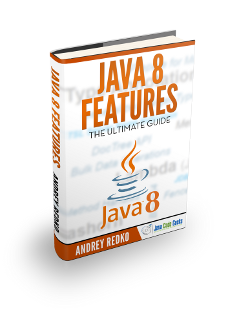Java 8 Stream – Map & Collect Example
Hello. In this tutorial, we will explain the most commonly used Java 8 Stream APIs: the map() and collect() methods.
1. Introduction
Before diving deep into the practice stuff let us understand the map and collect methods.
1.1 map() method
This method is used to convert an object to something else. Represented by the syntax:
map() method
<R> Stream<R> map(Function<? super T,? extends R>mapper)
1.2 collect() method
This method is used to collect the result of the stream pipeline in a collection (such as List, Set, or Map).
collect() method
<R, A> R collect(Collector<? super T, A, R> collector)
2. Practice
Let us dive into some practice stuff from here and I am assuming that you already have the Java 1.8 or greater installed in your local machine. I am using JetBrains IntelliJ IDEA as my preferred IDE. You’re free to choose the IDE of your choice.
2.1 Model class
Create a java file in the com.jcg.assignment.util package and add the following content to it.
Student.java
package com.jcg.assignment.util;
import java.util.ArrayList;
import java.util.List;
public final class Student {
private final int id;
private final String name;
private final double cgpa;
private Student(final int id, final String name, final double cgpa) {
this.id = id;
this.name = name;
this.cgpa = cgpa;
}
//util method
public static List<Student> createStudents() {
final List<Student> students = new ArrayList<>();
//adding students
students.add(new Student(101, "John P.", 7.51));
students.add(new Student(102, "Sarah M.", 9.67));
students.add(new Student(103, "Charles B.", 4.5));
students.add(new Student(104, "Mary T.", 8.7));
return students;
}
public int getId() {
return id;
}
public String getName() {
return name;
}
public double getCgpa() {
return cgpa;
}
@Override
public String toString() {
return "Student{" +
"id=" + id +
", name='" + name + '\'' +
", cgpa=" + cgpa +
'}';
}
}
2.2 DTO class
Create a java file in the com.jcg.assignment.util package and add the following content to it. This class will be used to map the model attributes with the dto attributes.
StudentDto.java
package com.jcg.assignment.util;
public final class StudentDto {
private final int studentId;
private final String studentName;
private final double studentPercentage;
public StudentDto(final int studentId, final String studentName, final double studentCgpa) {
this.studentId = studentId;
this.studentName = studentName;
this.studentPercentage = studentCgpa * 10;
}
public int getStudentId() {
return studentId;
}
public String getStudentName() {
return studentName;
}
public double getStudentPercentage() {
return studentPercentage;
}
@Override
public String toString() {
return "StudentDto{" +
"studentId=" + studentId +
", studentName='" + studentName + '\'' +
", studentPercentage=" + studentPercentage +
'}';
}
}
2.3 map() and collect() implementation
Create a java file in the com.jcg.assignment package and add the following content to it. The file will consist of two methods consisting of the dummy collection which is iterated upon and mapped accordingly.
Java8MapExample.java
package com.jcg.assignment;
import com.jcg.assignment.util.Student;
import com.jcg.assignment.util.StudentDto;
import java.util.List;
import java.util.stream.Collectors;
// map(...) method syntax
// <R> Stream<R> map(Function<? super T,? extends R>mapper)
public class Java8MapExample {
private static void prepareStringList() {
// Using map function to convert Stream<Student> to Stream<String>
final List<String> studentNames = Student.createStudents()
.stream()
.map(Student::getName)
.collect(Collectors.toList());
studentNames.forEach(System.out::println);
}
private static void convertToStudentDtoList() {
// Using map function to convert Stream<Student> to Stream<StudentDto>
final List<StudentDto> studentDtos = Student.createStudents()
.stream()
.map(student -> new StudentDto(student.getId(), student.getName(), student.getCgpa()))
.collect(Collectors.toList());
studentDtos.forEach(studentDto -> System.out.println(studentDto.toString()));
}
public static void main(String[] args) {
prepareStringList();
System.out.println("----------");
convertToStudentDtoList();
}
}
Run the file and if everything goes well the following output will be logged in the IDE console.
Console output
John P.
Sarah M.
Charles B.
Mary T.
----------
StudentDto{studentId=101, studentName='John P.', studentPercentage=75.1}
StudentDto{studentId=102, studentName='Sarah M.', studentPercentage=96.7}
StudentDto{studentId=103, studentName='Charles B.', studentPercentage=45.0}
StudentDto{studentId=104, studentName='Mary T.', studentPercentage=87.0}
That is all for this tutorial and I hope the article served you with whatever you were looking for. Happy Learning and do not forget to share!
3. Summary
In this tutorial, we learned the implementation of map and collect methods introduced in Java8 Stream API. You can download the source code from the Downloads section.
4. Download the Eclipse Project
This was a tutorial of learning and implementing the map and collect methods introduced in Java8 Stream API.
You can download the full source code of this example here: Java 8 Stream – Map & Collect Example



